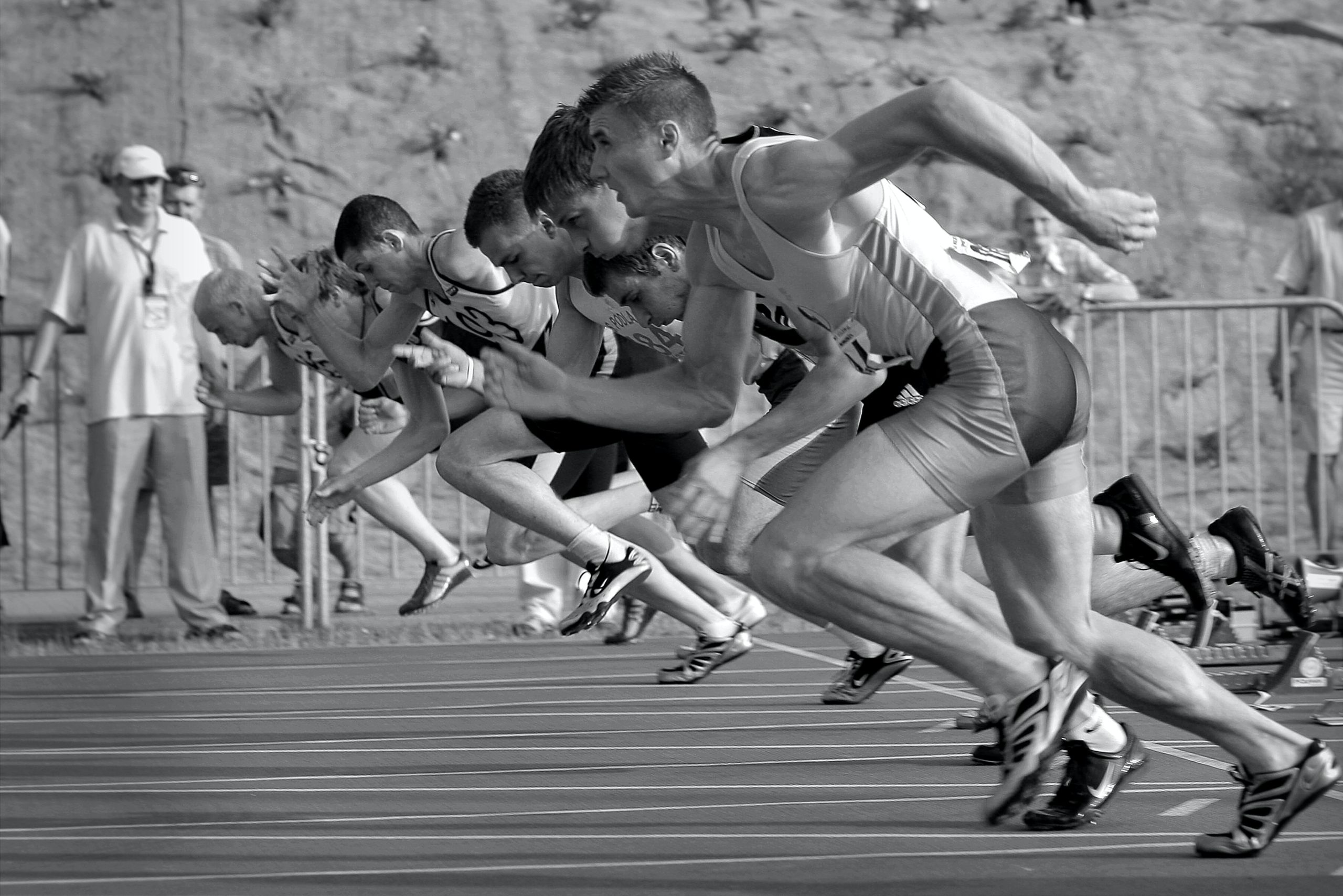Your knees…
Without them you are nothing.
Nada.
No matter what shape you are in if you have weak knees you put yourself at risk. You put yourself in a dangerous, unpredictable situation.
Like a Ferrari with a Corolla suspension, weak knees will take away from your performance. They will make it more difficult to move. To change direction. They will hold you back from taking part in the activities you enjoy.
In simple terms, weak, unstable knees will prevent you from building a better body.
But you can strengthen them. With some work and some strategic knee strengthening exercises, you can solidify the incredibly important joints that support you in everything you do.
Before we get into the exercises, we first need to understand the anatomy of the knee joint. Having a general understanding of how this joint operates will help you visualize exactly what each knee strengthening exercise is designed to do.
Anatomy of the Knee Joint
Let’s quickly go over the anatomy of the knee joint. I think it’s vital to have a general understanding of the muscles, ligaments, bones, and tendons that make up this complex joint.
For the sake of keeping this article shorter, I have two videos I really recommend you check out. Together they will give you a really good understanding of the anatomy of the knee joint.
This first video will give you a very good technical overview of the bones and ligaments that make up the knee joint:
This second video will give you a good insight into the knee joint as it goes over the important ligaments. (There is also a great overview of how an ACL is repaired…pretty interesting stuff!)
I hope you’re now armed with a (slightly) better understanding of the anatomy of the knee joint.
When it comes to strengthening the knees, there is an important note that needs to be made:
When we look to strengthen the knee joints, what we are actually trying to do is make them more stable. A knee that can stabilize itself during varying loads and movements is one that will keep you functioning optimally.
So how do we improve the stabilization of the knee joint?
What we want to do is focus on strengthening the muscles that surround the knee joint. It is our muscles that are constantly contracting and relaxing to keep us moving. If we are able to strengthen the muscles that surround and support the knee, we can essentially create a more stable environment for the knee to function.
Note: the ligaments and tissues that actually hold the knee joint together can only be strengthened to a certain degree. We have to stress them (i.e. keep them working) to keep them strong and healthy. We can also keep them healthy with the foods we choose to eat.
With that being said, the biggest factor we want to focus on is muscular balance (and we’ll touch on this in greater detail as we get into the exercises). Muscular balance around the knee joint is vital for the health and stability of your knees. We want to avoid having the anterior (front) leg muscles like the quadriceps more developed than the posterior (back) leg muscles like the hamstrings. As you’ll see, this imbalance can place excess stress on the knee joint. We always want to aim for a balance between the anterior and posterior muscle groups.
The following knee strengthening exercises will help you strengthen the muscles that surround the knee joint and create a safer and more stable environment for your knee.
Knee Strengthening Exercise 1 – Squats
The squat is one of the most beneficial yet most poorly executed exercises on the planet. It involves the use of many muscles, more than most people realize, and the systemic nature of the movement (when done with heavy weights) produces hormonal responses that positively affect the entire body. Your whole body, from your legs, to your hips, to your core are strengthened to extreme degrees.
But what’s important to realize is that the squat, when performed correctly, is not only the safest leg exercise for the knees, it produces more stable knees than any other leg exercise. It’s wonderful for stressing and strengthening the connective tissues that support the knee joint.
But the keywords here are performed correctly.
Unfortunately, the majority of people are not performing squats correctly.
A correct squat is a deep squat, where the hips drop below the level with the top of the patella, thus placing the hips through their full range of motion (see below).

Proper Deep Squat (source: Mark Rippetoe’s Starting Strength 2nd Ed)
The problem is that most people perform what are called partial squats. A partial squat is any squat that is not a deep squat. Any time you don’t go all the way down (see image above), you are doing a partial squat, and a partial squat places a lot of uneven stress on the knees.
You see, a deep squat places equal stress on the anterior leg muscles (quadriceps) as it does the posterior leg muscles (hamstrings and glutes). All of these muscles are required to work in unison to generate the power and force necessary to lift the weight up.
On the contrary, what happens during a partial squat is that since you’re only going down partially, the posterior muscles (primarily the hamstrings) become less engaged than the anterior muscles (quadriceps) because the hamstrings can only reach a full stretch at the very bottom of the squat. Since the quadriceps are primarily engaged, they create a stronger pull on the knee joint which is what creates the uneven stress on the knee joint.
So what we have happening is people are performing partial squats and in the process are building strong quadriceps while their hamstrings remain underdeveloped. And many studies have shown that underdeveloped (or weak) hamstrings play a heavy role in ACL tears and other knee injuries.
To stabilize the knee and tighten your suspension, it is vital that you allow the anterior and posterior leg muscles to each do their share of the work, and this is only possible when a deep squat is performed.
To transition from a partial squat to a deep squat you’re most likely going to have to lower the weight you’re squatting since you’ll be covering a much greater range of motion.
Don’t let your ego get in the way.
Squatting is not about the numbers. If you want to build strong, stable knees then you’ll need to be performing squats correctly and this means deep squats.
Note: a lot of these ideas about deep squats and partial squats are referenced from Mark Rippetoe’s book Starting Strength Basic Barbell Training (2nd Edition)
Knee Strengthening Exercise 2 – Sprinting
Very much like squatting, sprinting requires the unison between anterior and posterior leg muscle groups.
Sprinting is a very high-intensity exercise that is great for developing this necessary balance between the various muscle groups required to propel you forward. Recall from my sprint training article:
Sprinting works muscle groups in an explosive, dynamic, and balanced manner. Everything is working in unison. Your hamstrings and quadriceps are working together to propel you forward, not in isolation. Every component of your glutes is firing. Your core is activated from every angle as it works to generate and provide power to the extremities all in an act to keep you moving at the fastest manner possible
You can find all the information you’ll ever need on sprinting in my sprint training post.
….
I mentioned earlier the problem with underdeveloped hamstrings. When there is an imbalance between the anterior and posterior leg muscle groups (primarily overdeveloped quadriceps and underdeveloped hamstrings), we create an unsafe environment for our knees.
Our hamstrings take a lot of punishment. We don’t train them right. We spend too much time sitting which completely takes the life out of them.
So I think it’s important to incorporate more hamstring strengthening exercises to reverse that imbalance.
Here are two of my favorites:
Knee Strengthening Exercise 3 – Lunges
Lunges are great for developing the muscles of the posterior chain, primarily the hamstrings and glutes.
Beginners should start with bodyweight lunges and progress their way up to lunges while holding a dumbbell in each hand. Regardless of your level, the technique should be the same:
Stand tall with your head up and shoulders held back. With your feet shoulder-width apart, start by stepping out long with one foot. Lower yourself until your back knee is about an inch off the ground. Your front knee should be sitting straight above the ankle. Hold the position for a second and push off with your front leg to bring yourself up. Repeat with the other leg.

Knee Strengthening Exercise 4 – Bridge
The bridge is another great exercise for strengthening the hamstrings primarily.
Begin by laying down on your back with your knees propped up, feet flat on the ground, and arms to your sides. By pressing your feet into the ground, bring your hips straight up so your body is aligned from shoulders to your knees. Hold that position for a second and really squeeze your glutes. Bring yourself back down to the ground and repeat.

You can make this exercise much more challenging by adding an element of stabilization into play. Instead of placing your feet flat on the ground, place them on a stability ball. Now perform the same action of bringing your hips up in the air. Once this exercise becomes easier, progress to one foot at a time.
Bonus Tips
Here are a few bonus tips to take into consideration:
GET FLEXIBLE
Flexibility is very important for keeping your knees healthy. Make sure you take time to stretch all your anterior and posterior leg muscle groups regularly: quadriceps, hamstrings, glutes, adductors, abductors, hip flexors, calves, etc. to keep those muscles long and flexible.
GET UNSTABLE
Incorporate stability exercises into your training routine. Work with Bosu balls, stability balls, wobble boards, or any other tool that will force you off balance. This will train your knees to work more efficiently in unstable environments (which is a great simulation for a typical real-world scenario). Here are some examples I did for ankle strengthening exercises.
INCORPORATE SELF MYOFASCIAL RELEASE
Poor training habits and inefficient lifestyle patterns (such as prolonged sitting) wreak havoc on your soft tissues (muscles, ligaments, tendons, fascia). These poor habits and inefficient patterns create trigger points – or very tender spots on your body – that need to be broken and brought back to a relaxed, healthy state. Incorporate some soft tissue work in your routine every day. (Also, here’s an example of the kind of soft tissue work I do every day.)
Conclusion
Your knees are your support system.
They support you in everything you do. All your daily adventures, sporting activities, and even your casual walks around the block require your knees to be healthy and functioning.
So give them the care that they deserve.
Use the ideas presented here and the knee strengthening exercises listed to really tighten up your suspension and keep your knees stable and ready for action.
If you know of any other exercises or training methods for strengthening and stabilizing the knees, feel free to share them in the comments below.





